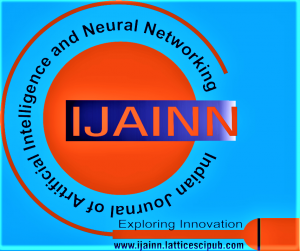![]()
Deep Learning Convolutional Neural Network for Defect Identification and Classification in Woven Fabric
Subrata Das1, Sundaramurthy S2, Aiswarya M3, Suresh Jayaram4
1Subrata Das, Professor, Fashion Technology, B.I.T., Sathyamangalam, TN, India.
2Sundaramurthy S, Associate Professor, Department of Information Technology, Bannari Amman Institute of Technology, Tamilnadu, India.
3Aiswarya M,Pursuing, Bannari Amman Institute of Technology Fashion Technology, Tamilnadu, India.
4Suresh Jayaram, Directors, Skycotex India pvt ltd, Tamilnadu, India.
Manuscript received on 26 March 2021 | Revised Manuscript received on 07 April 2021 | Manuscript Accepted on 15 April 2021 | Manuscript published on 30 April 2021 | PP: 9-13 | Volume-1 Issue-2, April 2021 | Retrieval Number: 100.1/ijainn.B1011021221 | DOI: 10.54105/ijainn.B1011.041221
Open Access | Ethics and Policies | Cite | Mendeley | Indexing and Abstracting
© The Authors. Published by Lattice Science Publication (LSP). This is an open access article under the CC-BY-NC-ND license (http://creativecommons.org/licenses/by-nc-nd/4.0/)
Abstract: Inspection is the most important role in textile industry which declares the quality of the apparel product. Many Industries were improving their production or quality using Artificial Intelligence. Inspection of fabric in textile industry takes more time and labours. In order to reduce the number of labours and time taken to complete inspection, computerized image processing is done to identify the defects. It gives the accurate result in less time, thereby saves time and increases the production. The convolutional neural network in deep learning is mainly used for image processing for defect detection and classification. The high quality images are given as input, and then the images were used to train the deep learning neural network. The woven fabric defects such as Holes, Selvedge tails, Stains, Wrong drawing and Snarls were identified by using Convolutional Neural Network. The sample images were collected from the Sky Cotex India Pvt. Ltd. The sample images were processed in CNN based machine learning in google platform; the network has a input layer, n number of hidden layer and output layer. The neural network is trained and tested with the samples and the result obtained is used to calculate the efficiency of defect identification.
Keywords: Convolutional Neural Network, Image processing, Snarl, Selvedge tails, Stains, Deep learning.
Scope of the Article: Deep Learning
